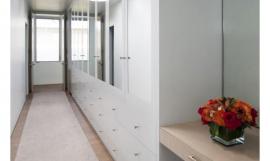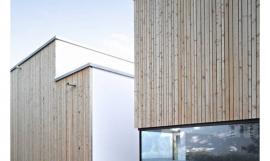建筑师:Mass Studies
地点: 韩国济州省
建筑师负责人: Mass 建筑研究所
设计团队: Minsuk Cho, Kisu Park,Kim, Jisoo Kim, Sungpil Won, Nikolas Urano, Sebastien Soan, Junghye Bae, Jangwon Choi, Kwonwoong Lim, Youngjoon Chung, Bhujon Kang, Zongxoo U, Taehoon Hwang, Sangkyu Jeon, Younkyoung Shin, Vin kim, Daeun Jeong, Yuseok Heo, Kyungmok Park, Wonbang Kim, Jieun Lee, Sanghoon Lee, Songmin Lee
面积:1,095,000平方米
年份:2011
摄影:Kyungsub Shin, Yong-Kwan Kim
结构工程:TEO结构
MEP工程师:HANA咨询及工程师
照明工程师:Newlite
景观设计:Soltos园林绿化
Architects: Mass Studies
Location: Jeju Province, South Korea
Architect In Charge: Minsuk Cho, Kisu Park
Design Team: Kim, Jisoo Kim, Sungpil Won, Nikolas Urano, Sebastien Soan, Junghye Bae, Jangwon Choi, Kwonwoong Lim, Youngjoon Chung, Bhujon Kang, Zongxoo U, Taehoon Hwang, Sangkyu Jeon, Younkyoung Shin, Vin kim, Daeun Jeong, Yuseok Heo, Kyungmok Park, Wonbang Kim, Jieun Lee, Sanghoon Lee, Songmin Lee
Area: 1,095,000 sqm
Year: 2011
Photographs: Kyungsub Shin, Yong-Kwan Kim
Structural Engineering: TEO Structure
Mep Engineer: HANA Consulting & Engineers
Lighting Engineer: Newlite
Landscape Design: Soltos Landscaping


Daum是一个国际IT公司,总部设在韩国,因其门户网站服务而闻名。 与其竞争对手不同,它们通常位于大都市,而在过去的8年Daum公司已计划将其业务搬迁到一个未开发的地方——济州省(一个位于韩国南部海岸的自治岛)。 作为一个重要的旅游中心而著名的济州省,在最近几年一直鼓励其他行业的实施,其中之一是岛上以科技为基础的工业园区的发展。
Daum is an international IT firm based in Korea, primarily known for its web portal services. Unlike its competitors that are typically located in metropolitan areas, Daum has been planning to relocate its operation to an undeveloped site within Jeju Province (an autonomous island situated off of the southern coast of Korea) for the past 8 years. Largely known as a major tourism hub, Jeju Province has been encouraging the implementation of other industries in the recent years, one of which is the development of the island’s technology-based industrial complex.

考虑到韩国的城镇人口增长率在过去的50年,从20%至80%以上——这使得韩国成为世界上城市化程度最高的国家。Daum放逐自己到农村济州省这一疯狂的举动可以称作一个乌托邦式的姿态,与上世纪70年代在美国硅谷相比,它作为一个叛逆的尝试,远离城市环境,重塑一个独立的,创造性的工作社区。 城市的工作场所在21世纪面临的另一个难题是,工作组织的性质变得更加水平,而工作的空间却变得垂直。 因此,以这个难题为契机,济州省提供了慷慨的条件,想象一种新型的空间组织与Daum的创意、水平的工作组织性质对应。
Considering the fact that the urban population of Korea has grown from 20% to over 80% in the last 50 years – which makes Korea one of the most urbanized countries in the world – Daum’s radical step of exiling themselves to the rural Jeju Province can be framed as a utopian gesture, comparable to Silicon Valley of the late 70’s in America, as a rebellious attempt to move away from the urban setting to reinvent an independent, creative work community. Another dilemma that urban workplaces face in the 21st century is that while the nature of the working organization is becoming more horizontal, the spaces are becoming vertical. Therefore, the generous conditions provided by Jeju Province counters this problem as an opportunity to imagine a new type of spatial organization to match Daum’s creative, horizontal working organization.


在未来十年中,Daum公司计划逐步搬迁其业务。 对于IT的复杂发展,济州省分配了在岛上北部山坡上一块1095900平方米、靠近济州大学的巨大的,未开发的土地。 Daum的基地,最长的边达到300米宽和800米长,是该发展区域内最大的中央基地,有132000平方米,在其纵向方向平行于主要道路,在其长度方向平行。 鉴于这个规模,可以想象随着时间的推移,Daum的复杂的发展——在绿色基地逐步建立一个上有总体规划的有机生长。作为典型的办公园区发展的一个反作用力—— 一个在均质地基的低层,背景不突出的的办公区域漂浮在海上的露天停车场——Daum的总体规划设计成一个线性的增长,将相对立的农村与城市地区、非正式与正式的区域区分开来。
Over the course of the next decade, Daum plans to gradually relocate its operations. For the development of the IT complex, Jeju Province has designated a vast, undeveloped land of 1,095,900 square meters on the island’s northern mountainside, in close proximity to Jeju University. Daum’s site, 300m wide and 800m long at its maximum, is the largest central plot within the development area, measuring 132,000 square meters and parallel to the main road in its longitudinal direction. Given this scale, one can imagine Daum’s complex built progressively over time, a masterplan growing organically across the site’s green terrain. As a counteraction to the typical office park development – a homogeneous field of low-rise, non-contextual office blocks floating in a sea of parking lots – Daum’s masterplan is designed as a linear growth, dividing the site into opposing rural vs. urban zones and informal vs. formal zones.


城区将被定义为一个高密度、低层,750宽,800米长的上层建筑。 这项提案可以使功能实现最优化,支持高效的城市工作区——“信息高速公路”,无论是象征意义上还是实际上的——大面积的公园般的空间,点缀着屋社区活动,如农业,体育设施等。城市区域的每个建筑,不超过5层高,都是位于前面的地板水平以上,以适应该基地逐步上升的60米,趁着这个温和的,均匀的斜坡来连接在不同的层次上的设备。 这种渐进式的调整促进整个基地在垂直、水平和对角方向上的运动,有效地提高了总体规划的效率和统一。
The urban zone will be defined by a dense, low rise, 70m wide and 800m long superstructure. This proposal allows functions to be optimized, supporting an efficient urban work zone – an “information superhighway,” symbolically as well as literally – and a vast area of park-like space dotted with facilities that will house community activities such as farming, sports, etc. Each of the buildings in the urban zone, no more than 5 floors high, are situated a floor level above the previous to accommodate the site’s gradual 60m rise, taking advantage of this gentle, uniform slope to connect the facilities at different levels. This progressive alignment promotes movement across the site vertically, horizontally and diagonally, effectively increasing the efficiency and unity of the masterplan.


在设计过程中,我们想到了一种方法来创建一个结构系统,它有可能成为整个领土的语法。为了正式确定这个概念,我们设计了五个8.4米乘8.4米的基本结构模块,它们经过挤压或旋转,可以根据需要延长或终止这种结构。 这些模块的组合,作为结构沿着水平和垂直方向拓展。 有了这些基本的“正式的组织结构”,我们能够形成各种形式的拱形,或悬臂式空间,同时又提供了一种方式使园区有机地增长,以满足未来的不可预知的需求。 因此,12.6米跨度的大空间或6.3米的悬臂由内有3.8米空间的垂直墩支持,创造了不同大小和外壳的空间。
During the design process, we thought of a way to create a system of structure that could potentially serve as the grammar for the entire territory. To formalize this notion, we designed five elementary structural modules of 8.4m by 8.4m with variations of extrusional or rotational attributes, to either extend or to end the structure as necessary. As a combination of these modules, the structure expands horizontally and vertically. With these basic “formal structures,” we were able to form various forms of vaulted, or cantilevered spaces within large open planes, while also providing a way for the entire campus to grow organically to meet the unpredictable needs of the future. As a result, large spaces of 12.6m spans or 6.3m cantilevers are supported by vertical piers with small 3.8m spaces within them, creating a field of spaces of various degrees of size and enclosure.


作为总体规划的第一个建筑,Daum空间位于靠近中心的部位,为前350名员工提供办公空间以及其他辅助功能。因为这些模块的组合,我们能够把主要中心设计为一栋五层的建筑,它在四个方面开放,使西部附近的森林,汉拿山以南,与海洋到北的风景渗入室内,创造一个良好的工作环境。地面层则作为各种共享/公共功能的空间。
As the first building within the masterplan, Daum Space is located near the center of the site, to provide the office space for the first 350 employees as well as other subsidiary functions. As a combination of these modules, we were able to design the Main Center as a five-storey building that is open on all four sides, allowing the scenic views – a nearby forest to the west, Halla Mountain to the south, and the ocean to the north – to penetrate into the interior, creating a favorable working environment. The ground floor serves the various shared / public functions.


设在这里的有自助餐厅,开放式休息室,咖啡厅,为Daum公共空间交流而设的小亭子,一间游戏室,一间健身房和会议室,以及从工作空间脱离出来的礼堂。 倾斜的基地与2楼南端的入口道路相接,从这里可以进入到礼堂。 建筑的入口位于基地更深的地方,其中的室外空间将两个入口分隔开来。 2楼提供了一个两层楼的天花板高度和最大的开放式的工作空间,由接待区,办公空间,会议室和一大块会议室及其上面三楼的图书馆组成。
The cafeteria, an open lounge, a café, a small pavilion for Daum’s public relations purposes, a game room, a gym, and meeting rooms are located here, as well as an auditorium that is isolated from the work space. The inclined site meets the entrance road on the southern end of the 2nd floor, where one enters the auditorium. The main entrance to the building is located further into the site, with an outdoor space separating the two entrances. The 2nd floor is provided with a double floor ceiling height and the largest open plan work space, composed of the reception area, office spaces, and a block of conference rooms with a library above it as the 3rd floor.


作为一个上升到第4和第5层的空间,楼面面积变小,从而实现更加孤立,亲密的办公空间,项目室和会议室,以及带户外露台(无论是木制平台还是草地)。 在支墩里面,作为在各楼层的垂直结构元素,为各种核心服务,HVAC(采暖通风与空调),楼梯,电梯,以及较小的会议室,休息室,哺乳室等项目圆形或圆角矩形空间。 因此,Daum的空间有系统的严密性,通过创建各种不同规模和品质的空间,它感觉就像是一个风景如画的村庄,作为空间体验的垂直/水平的元素,参与在不久的将来进一步的增长。
As one progress upward to the 4th and 5th floors, the floor areas become smaller, allowing for more isolated, intimate office spaces, project rooms and conference rooms, together with outdoor terraces (of either wooden decks or grass). Inside the piers, which act as the vertical structural elements on all floors, are round or rounded rectangular spaces for various core services, HVAC, stairs, elevators, as well as programs such as smaller meeting rooms, restrooms, and lactation rooms. As a result, Daum Space has systematic rigor, but by creating an array of spaces of various scales and qualities, it feels like a village without being picturesque, as a vertical/horizontal field of spatial experiences which anticipates further growth in the near future.

















特别鸣谢翻译一组01号 罗晓茜 提供的翻译,译稿版权归译者所有,转载请注出明处。
|
|

 幼儿住宅凯旋诺亚/Kinderhouse Arche Noah / Liebel Architekten BDA
幼儿住宅凯旋诺亚/Kinderhouse Arche Noah / Liebel Architekten BDA
